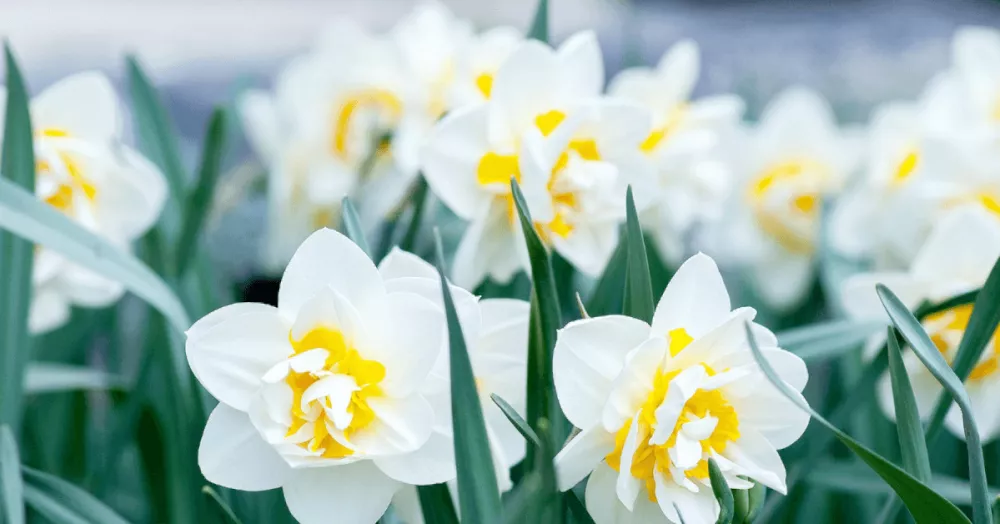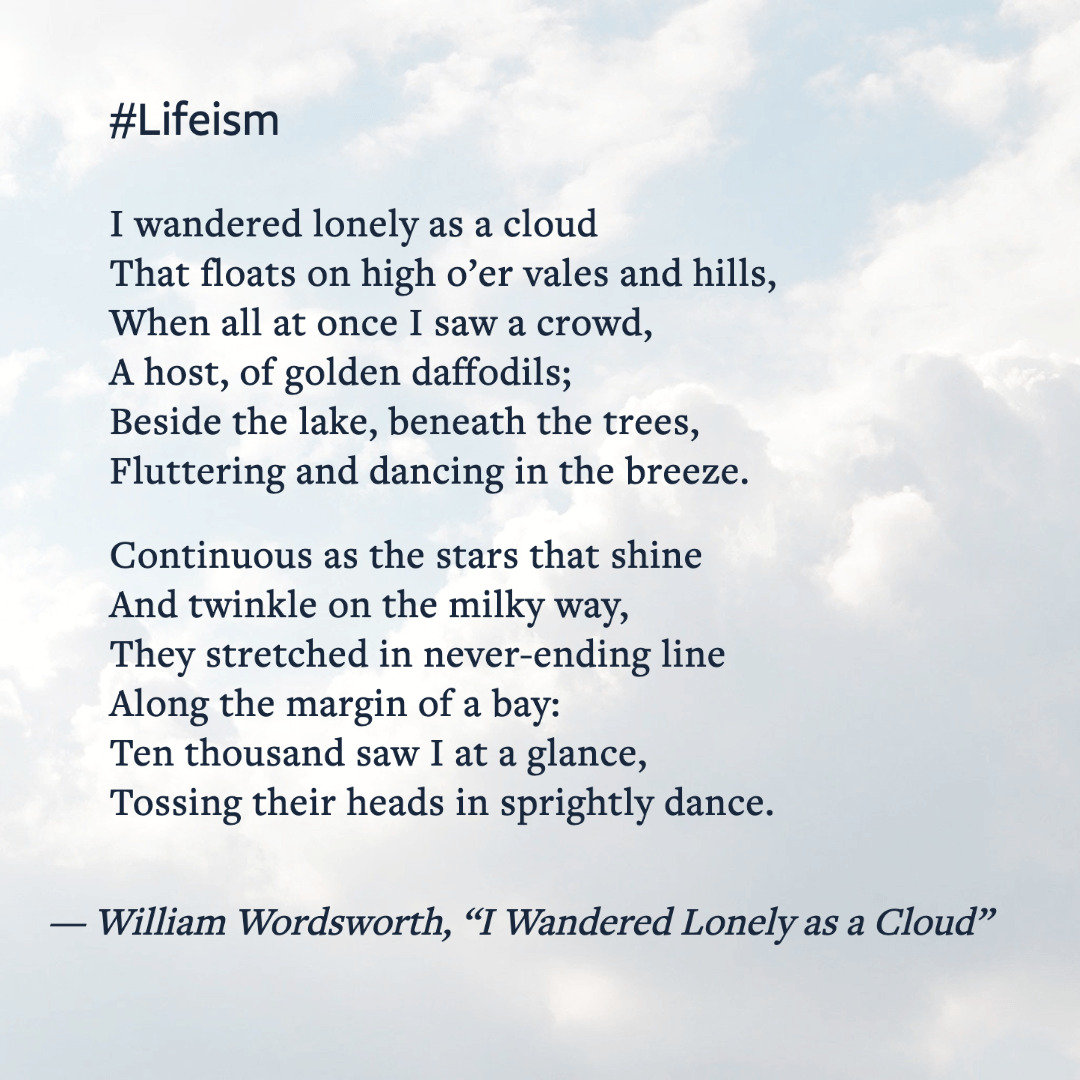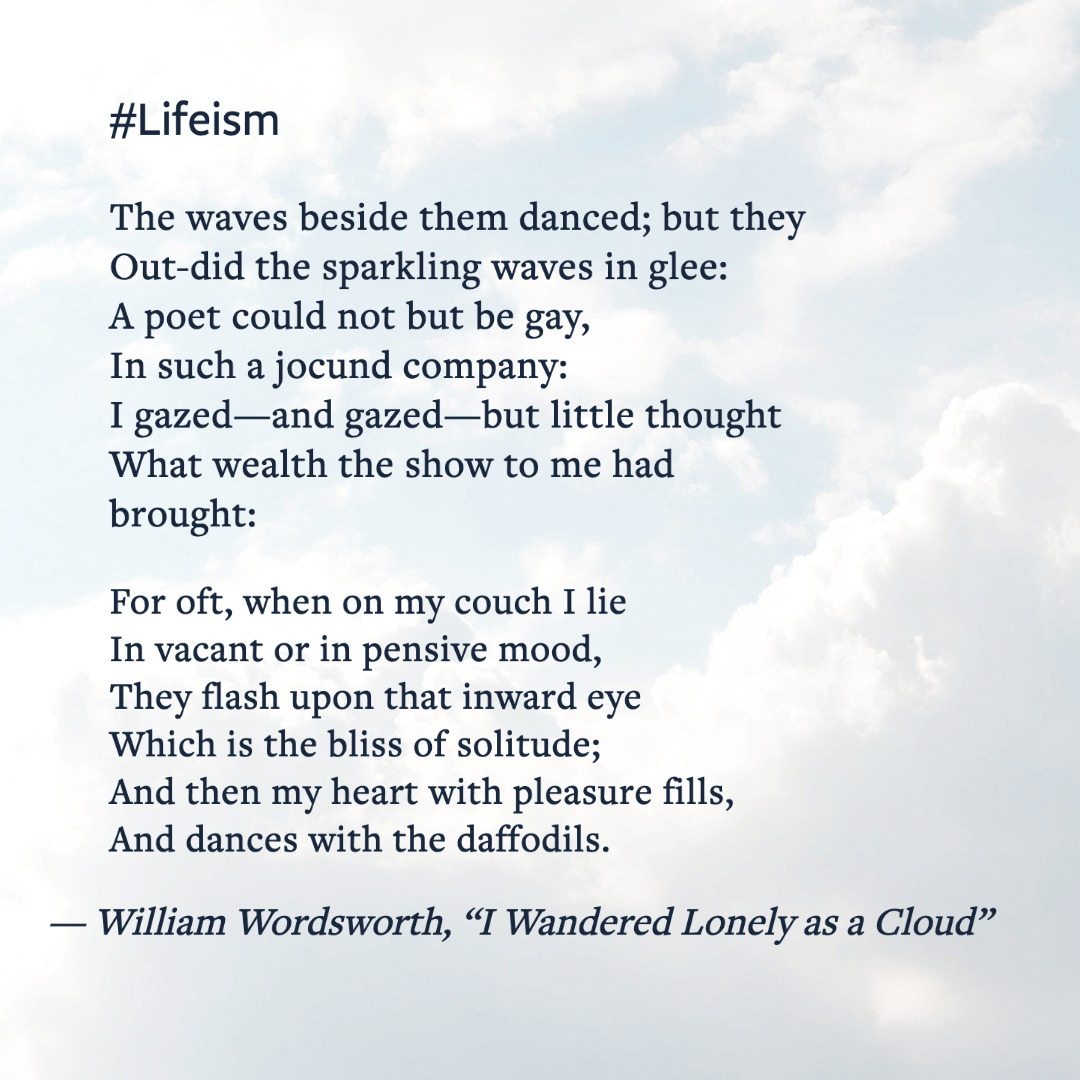Finding Your Daffodils
Daffodils or "I wandered lonely as a cloud" is a poem about appreciating the little joys of life. Dive into a lyric meditation on nature and self.

‘I wandered lonely as a cloud’, a line so poetic and arousing at first glance.
We are brought into this vast universe alone and return to dust all alone as well. Life is our solo journey where we are our only constants. Paths may cross, collude, and even align for a bit but the only person you’ll find throughout your journey is you. While you walk your path, it is important to pay heed to the smaller things that add bigger value to our lives and really appreciate these things. Make the smaller things in your life count. This poem by William Wordsworth inspires the readers to find joy in the little things in life.
The Poem
I wandered lonely as a cloud That floats on high o'er vales and hills, When all at once I saw a crowd, A host, of golden daffodils; Beside the lake, beneath the trees, Fluttering and dancing in the breeze. Continuous as the stars that shine And twinkle on the milky way, They stretched in never-ending line Along the margin of a bay: Ten thousand saw I at a glance, Tossing their heads in sprightly dance. The waves beside them danced; but they Out-did the sparkling waves in glee: A poet could not but be gay, In such a jocund company: I gazed—and gazed—but little thought What wealth the show to me had brought: For oft, when on my couch I lie In vacant or in pensive mood, They flash upon that inward eye Which is the bliss of solitude; And then my heart with pleasure fills, And dances with the daffodils.
About the poet
William Wordsworth is one of the five iconic Romantic Poets in English Literature. Born in 1770 in the Lake District of England, Wordsworth was always a man of his own ideas. Wordsworth wrote genres such as British Romanticism, nature, war, loneliness, and democracy. Despite being a romanticist at heart, Wordsworth had strong views about life in general. He had already formulated strong political views quite early on in his life and he used his poetry and literature to voice out his opinions. He is well known for the Lyrical Ballads written by him in collaboration with Samuel Taylor Coleridge. Other famous works by the poet are – The Solitary Reaper (1807), The World Is Too Much With Us (1807), and The Prelude (1850) just to name a few!
Wordsworth – A romantic at heart
Wordsworth had an immense love for literature and started writing at quite an early age. He found a spiritual connection with nature and had a very romantic approach to life. Many of his writings clearly depict his love for nature. He was also a strong believer in democracy. He couldn’t tolerate the tyranny and many works of his depict a strong democratic spirit.
Being a romantic at heart, Wordsworth knew the true meaning of life. He explored different aspects of life through his poetry and taught the readers how to enjoy the simple pleasures of life.
In this poem, Wordsworth explores nature through a philosophical approach towards life. His strong use of metaphors based on nature adds a magical touch to his poetry.
Poem Analysis
This poem by William Wordsworth often referred to as ‘Daffodils’, feels like a poem about flowers and a forlorn narrator at first glance. But that’s not it! Take a closer look at it. Read it trying to feel like you’re present in the moment and try to understand what the poet is trying to convey.
That’s the beauty of poetry and literature in general. This world is not judgmental at all. The renowned psychologist Sigmund Freud stated that a human is a sum total of all the experiences in his/her life. This is why we all may do the same task differently. This also means we all interpret poetry differently too. Poetry is a form of art. You can soak in its goodness the way you want to. So, let’s read this poem with an open mind and understand it stanza by stanza.
Stanza 1 and 2

The first half of the poem describes a ‘crowd of daffodils’ that the narrator encounters as he sets out for a stroll. Here the wandering mind of the narrator is compared to a lonely cloud that wanders its way until it is greeted by someone. The narrator is greeted by a vast field of daffodils that instantly fills his heart with warmth and joy.
The field is so big that the number of daffodils seems endless, just like the twinkling stars on a starry night. The daffodils are so many that the narrator feels like he has laid his eyes upon ten thousand of them all at one go. Not only does the poet feel a sense of thrill after seeing the daffodils but the daffodils also seem so happy that they appear to be dancing and swaying in the wind.
Looking at it on a deeper level, the various elements in nature can be compared to our minds and human nature. We all have days when we feel lonely and when our minds are clouded with dark thoughts. We all have days when we feel trapped in our heads, and we feel unnoticed. On days when we are feeling low, it is very easy to fall into a deeper trap of negative emotions. However, all it can take sometimes is one person or one positive thought to make us feel better and happier.
The poem also tells us that we have a choice. The narrator wandered lonely for a while before he saw the field of daffodils. He could have surpassed it and not felt a thing about it. But he chose to feel happy about it and really appreciate the flowers. When he did that, he felt that he was being welcomed by the flowers. On a bad day, we can choose to think positively. We can choose to change our moods. Just like the narrator.
Stanza 3 and 4

The last two stanzas go on to describe the impact the daffodils had on the poet. While everything around the daffodils shone with its own beauty, the daffodils stole the show. The narrator couldn’t get his eyes off the daffodils. It filled him with immense joy and happiness. Even when he left the field, he was filled with the vivid imagery of the daffodils.
When his mind is occupied with negative thoughts and the day has been particularly gloomy, the narrator relives the memory of the Daffodils. It brings a smile to his face instantly.
The entire poem is hinged on one seemingly small experience of life. An encounter with the daffodils. Yet, the poet shows us how these little things in life can make us happier in our darkest times. The narrator also hints at the benefits of gratitude. It is his appreciation for the small things in life that make the Daffodils so important.
Our happiness is solely in our hands. It is natural to feel upset and feel low on some days. But when we allow that feeling to consume our lives, it becomes an issue. In a way, the poet is offering us an easy way to change our mood. Think back to a time when you felt happy and joyous. Even if it is as simple as looking at a field of daffodils. Experience that moment. And see your mood change instantly.
Happiness comes from within – quite literally, as a result of our hormones. In this article let’s explore the biochemistry of happiness.
lifeism.coThe themes of the poem
The entire poem is an extended metaphor for the little things in life. Wordsworth uses the imagery of the daffodils to urge his audience that pleasure lies in the small things in our lives. Sometimes happiness can be in front of us disguised in forms like the daffodils in this poem. We just have to learn how to recognize it and appreciate it.
Here the daffodils can also be a metaphor for our happy and positive thoughts. When our mind wanders lonely as a cloud into the dark side, we can bring it back to the happy memories or the daffodils of our minds.
The poem revolves around the themes of appreciation and romanticism. Here romanticism is in the form of appreciating nature and everything around you. The narrator felt a strong spiritual connection to the daffodils which made him realize that happiness and satisfaction truly lie in the things around us.
How can you find the daffodils of your life?
How can you find your little happiness? What is it that truly makes you feel happy and fulfilled? What things can make you happy? Here are a few ideas that might help:
Appreciate the small moment in life
Gratitude Affirmations: A beginner’s guide to living a life of happiness and contentment.
lifeism.coGive yourself a warm hug
When times are tough, we go through emotional ups and downs. Anxiety, fear, and sadness can take over in seemingly trivial moments. Read about simple steps you…
lifeism.co
Laugh more
This is not a joke. But you should laugh anyway. Here are a few reasons why laughing is a serious business.
lifeism.coTry to calm yourself when you are feeling anxious
Are you struggling with anxiety or brain fog every now and then? Try these simple tips to calm yourself and change your mood.
lifeism.coSpend time with furry friends
Pets may not be our whole lives, but they make our lives whole. Here the top reasons why getting a pet is the best decision you’ll make.
lifeism.coGet closer to nature
Being around nature calms us, centers us in numerous ways. Nature therapy has been on our minds lately, and here are a few ways to reconnect with nature.
lifeism.co














Comments